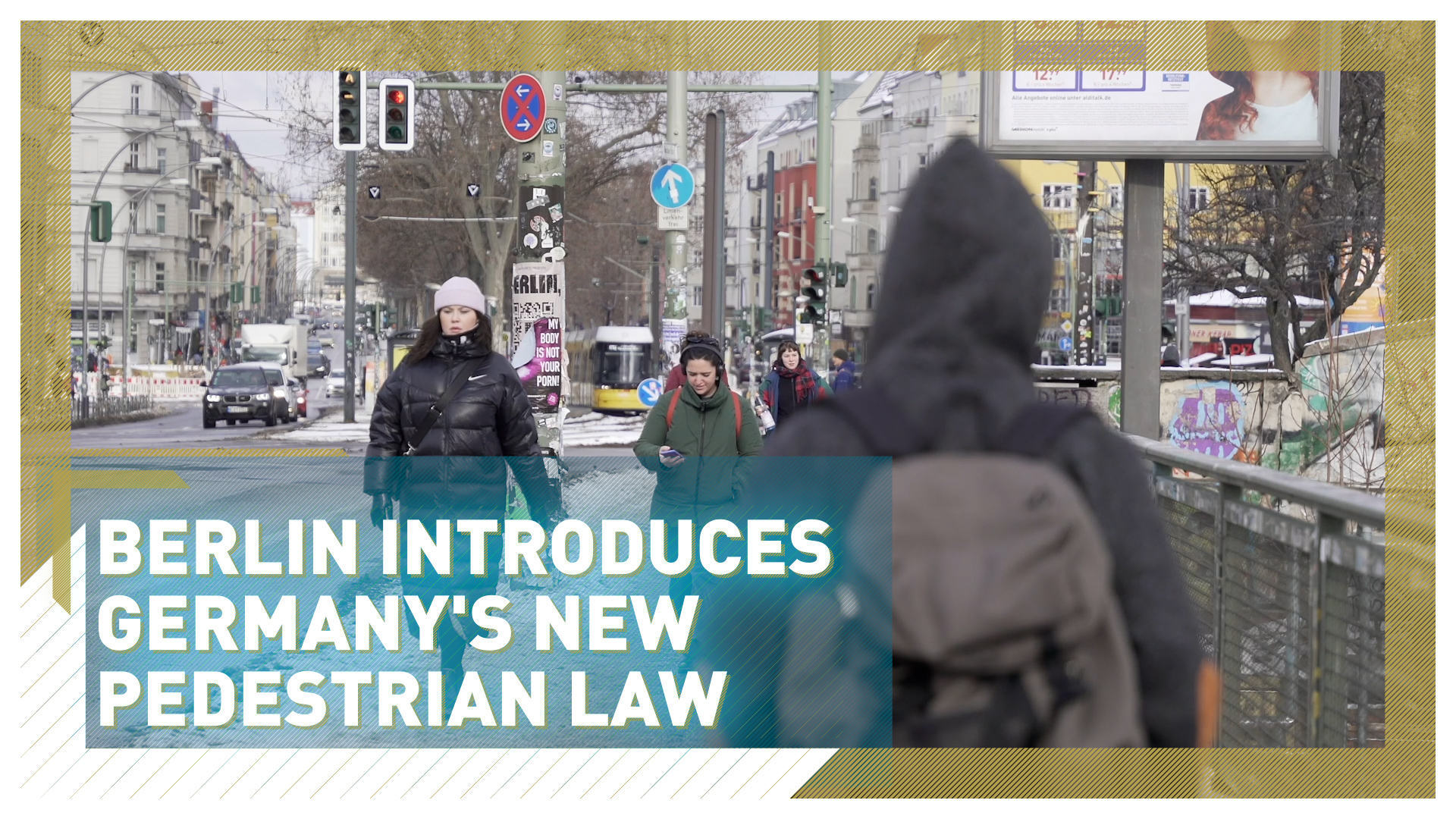03:12

Berlin has introduced a new "pedestrian law" aimed at improving the local environment and traffic conditions for those traveling by foot and bikes in Germany's capital.
The legislation, voted in by Berlin's senate, is part of the city's larger mobility legislation package. The city had dragged its heels on energy transition for years, but the local government has recently set new climate targets that the Green Party described as "a milestone."
"By applying this law we are one step closer to achieving a climate-neutral Berlin before 2050," said Harald Moritz, transport policy spokesman for the party.
READ MORE
UK fish to get 'more attractive' names
Jaguar CEO on firm's electric future
Europe begins search for 'parastronaut'
"Since Germany joined the Paris Climate Agreement, we as the federal states and the municipalities have to work towards that," he added: "It's not that we have to, but we want to.
"By changing the Mobility Act, we are protecting the environment."
The law amends a previous one from 2018 which noticeably boosted cycling infrastructure around the city and comes with a lengthy to-do list.
This includes traffic lights staying green for longer to benefit pedestrians, safer school routes for children, more crosswalks and more benches for people in need of a rest. Curbs on sidewalks are also set to be lowered to make them more wheelchair accessible.

Berlin wants to increase the number of walking journeys by around half by 2030. /Markus Lange/Robert Harding/CFP
Berlin wants to increase the number of walking journeys by around half by 2030. /Markus Lange/Robert Harding/CFP
Faster modes of transport have enjoyed the right of way for nearly a century in Germany. That means pedestrians and cyclists tend to yield to cars and trucks – not the other way around. But according to pedestrian activists, that is bound to change.
One of the main goals of the new law is to help hit the EU's greenhouse gas reduction target by increasing the number of walking journeys by around half, up from 27 percent to 41 percent by 2030.
Over the past few years, the German government has been pushing for a climate-neutral society, having imposed a CO2 tax, banning plastic products and investing in electrical vehicles.
Although politicians and climate groups have praised the measures, for Roland Stimpel, the Berlin director of Germany's Foot Traffic Association (FUSS), nothing matches walking when it comes to environmental benefits.
"With electric cars there is no direct pollution, there is no noise, but they don't really solve the problem in the cities," says the activist.
"The battery of a Tesla weighs about 600 kg – that's as much as a car from the post-war era. So being heavier means using up more energy," he adds.
"People talk about an ecological footprint – in traffic, we say that's nonsense," says Stimpel. "Feet don't have an ecological print, so it makes sense to get more people walking."
As Berlin tries to emulate other cities such as Oslo in Norway and Copenhagen in Denmark, where pedestrian needs have been prioritized for almost a decade now, there's a sense among activists that the German capital has a lot of catching up to do.

